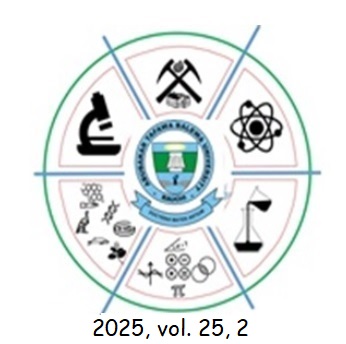Integrated Geophysical Appraisal of Groundwater Potential in a Crystalline Basement Terrain Using Vertical Electrical Sounding: A Case Study from Chikun and Environs, North-Central Nigeria
Keywords:
Groundwater potential, Vertical electrical sounding, Crystalline basement, Geo-electric layers, Chikun, NigeriaAbstract
This study conducts a detailed geophysical assessment of groundwater potential in
the crystalline basement terrain of Chikun and its environs in North-Central Nigeria,
employing the Vertical Electrical Sounding (VES) technique. The region is geologically
characterized by porphyritic granite, granitic gneiss, and mica schist, which exhibit
varying degrees of weathering and fracturing—key factors influencing groundwater
accumulation and movement. A total of fifteen VES stations were surveyed within
the Kakuri Sheet 144 NW, revealing four to six distinct geo-electric layers. These
layers include topsoil, sandy clay, consolidated sand, highly weathered basement,
slightly weathered basement, and fresh basement rock. Resistivity values recorded
across the area ranged from 195.3 to 604.4 Ωm. Zones with lower resistivity were
interpreted as water-saturated layers, indicative of potential aquifer units. Notably,
VES points 1, 2, 5, 8, 9, 13, and 15 displayed favorable geoelectrical characteristics
for groundwater development, making them suitable candidates for borehole drilling.
The fractured and weathered basement units constitute the primary aquifer zones,
providing a dependable source of groundwater within this otherwise low-permeability
hard rock environment. The findings affirm the effectiveness of VES as a non
invasive, cost-efficient method for delineating subsurface hydrogeological
structures and identifying viable groundwater zones. This integrated geophysical
approach not only enhances groundwater exploration and development in the study
area but also offers a practical and replicable model for similar crystalline basement
terrains across sub-Saharan Africa—especially in regions facing seasonal water
scarcity and increasing demand for sustainable water supply.
Downloads
Downloads
Published
Issue
Section
License
Copyright (c) 2025 Journal of Pure and Applied Sciences (Science Forum)

This work is licensed under a Creative Commons Attribution-NonCommercial-ShareAlike 4.0 International License.




